Ganesh Chaturthi, or Vinayaka Chaturthi, is a Hindu festival worshipping Lord Ganesha. It starts on the fourth day of the Hindu lunisolar calendar month, Bhadrapada, which typically falls in August or September.
The festival celebrates Ganesha's birthday and worships him as the god of good beginnings, prosperity, and obstacle remover. Here are some delicious recipes that are Ganesha's favorite.
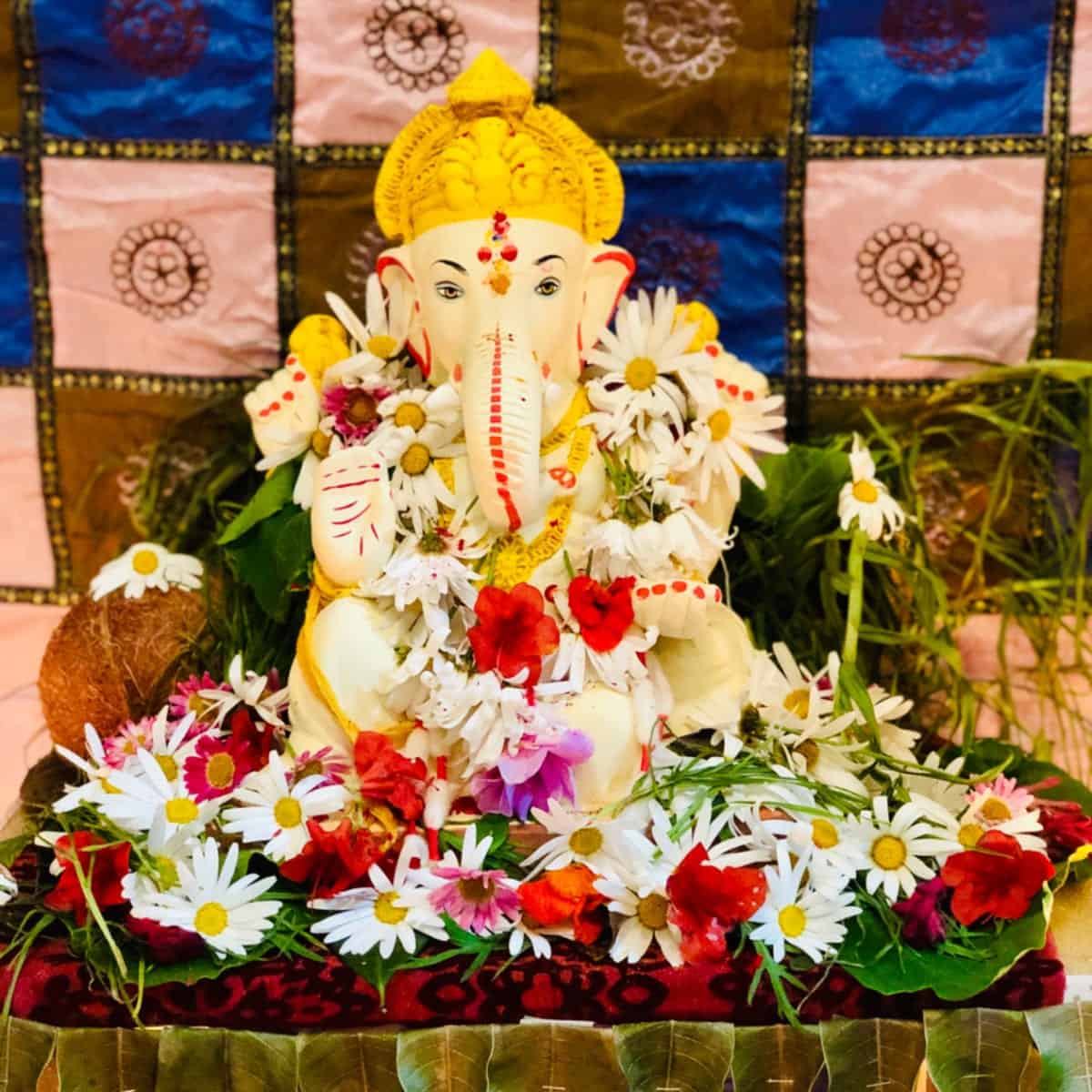
Jump to:
About Ganesh Chaturthi
Ganesh Chaturthi, or Vinayaka Chaturthi, is a Hindu festival worshipping Lord Ganesha. It starts on the fourth day of the Hindu lunisolar calendar month Bhadrapada, which typically falls in August or September. The festival celebrates Ganesha's birthday and worships him as the god of good beginnings, prosperity, and obstacle remover.
As a child, I grew up celebrating this festival in a grand manner. We kept and worshipped the Ganesha idol at home for five days. Elaborate feasts were cooked at home every day and offered to Bappa. On the 5th day, the Ganesha idol was immersed in a river near our home.
I don't celebrate Ganesha Chaturti in such an elaborate manner these days, yet it is the festival I am most excited about every year. We celebrate it for one day and prepare lots of mouthwatering festive food. I have compiled a few recipes that are our family favorites and are perfect for celebrating Ganesha Chaturthi. I have also put together a few meal plans I have made previously during Ganesh Chaturti.
Here are some Ganesh Chaturthi recipes and festival meal plans perfect for Ganesha Chaturthi. Make these mouthwatering dishes this festive season and enjoy!
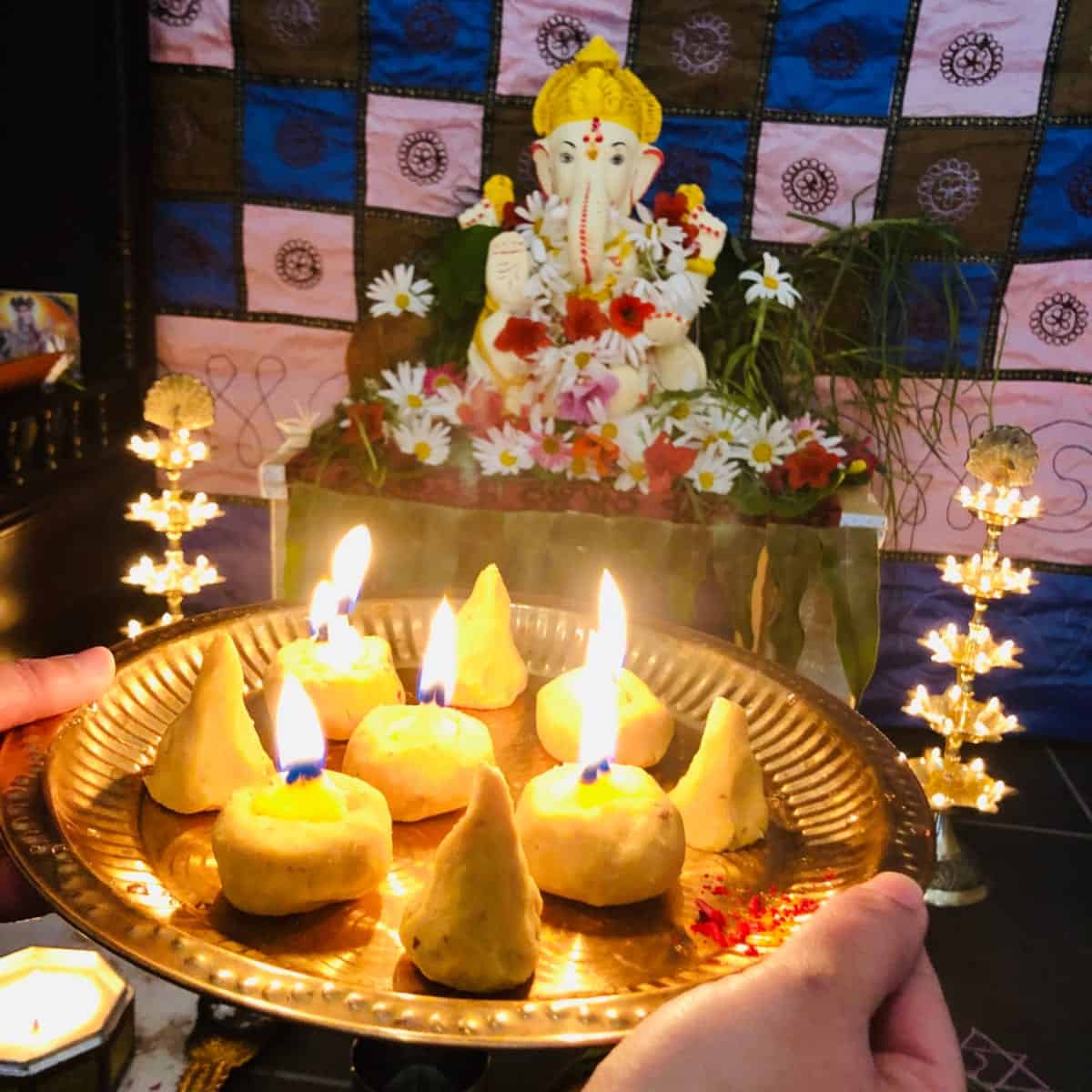
Lord Ganesha's favorite food
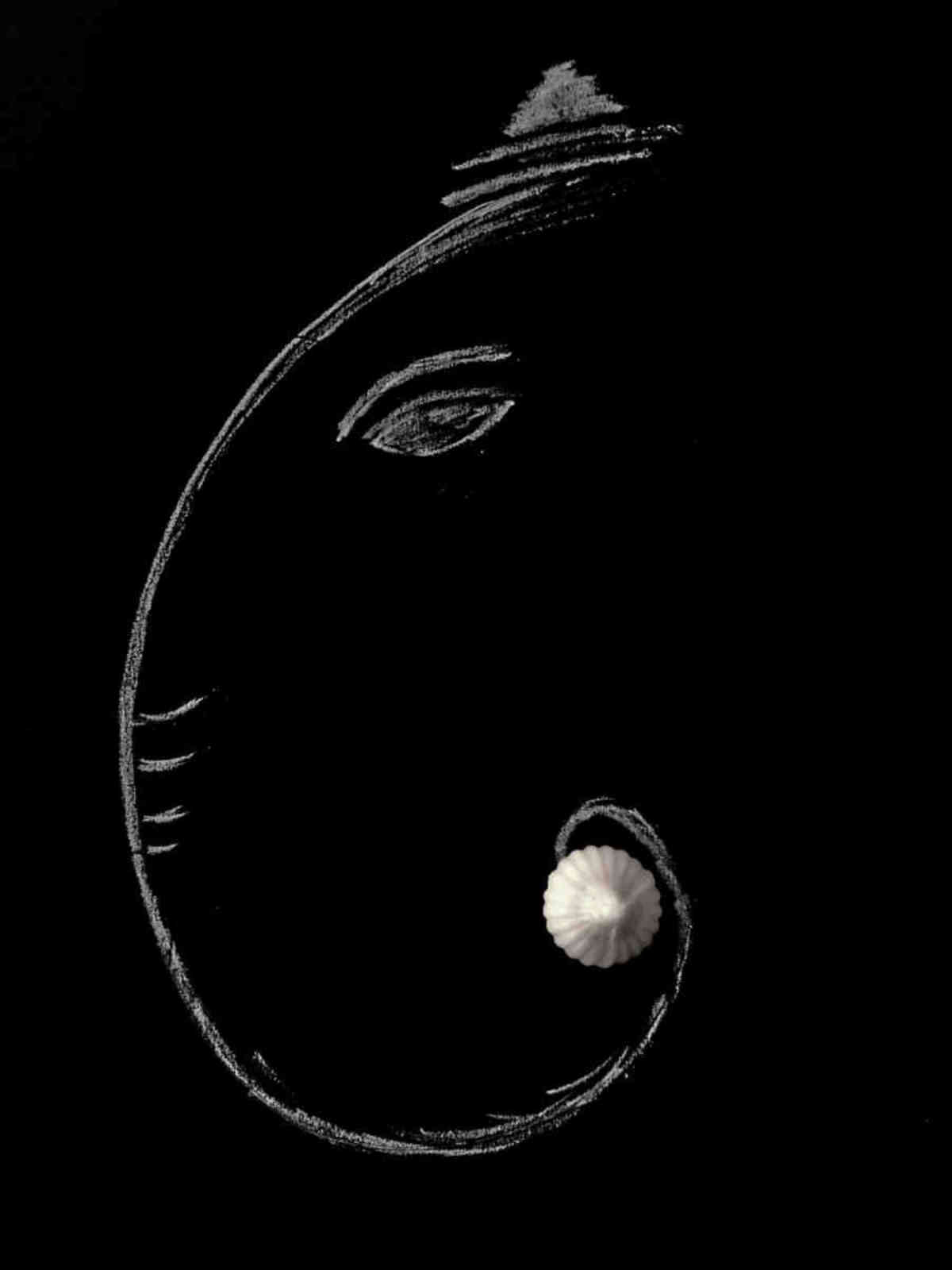
Lord Ganesha is also known as 'modakapriya' - one who loves modaks. Like all Indian festivals, Ganesha Chaturthi is also celebrated with lots of food, and modak is a mandatory offering to Lord Ganesha. It is believed that offering 21 modaks to Lord Ganesha is very auspicious.
According to Hindu mythology, Goddess Parvati was once given a modak by the Devas and was told that the person who ate it would become the most knowledgeable. Parvati wanted to give it to her sons - Karthik and Ganesha; however, the brothers were not ready to share the modak. So Lord Shiva and Parvati gave a contest to them and said the person who first completes three rounds of the world would get the modak. Lord Karthik immediately took his 'vahana' (vehicle), a peacock, and began to make the rounds. However, Lord Ganesha took three rounds of his parents and said this was the whole world for him. Impressed by this, Parvati gave him the modak, which has been his favorite ever since.
Here are some modakum recipes for your Ganesha Chaturti celebrations.
Panchamrut
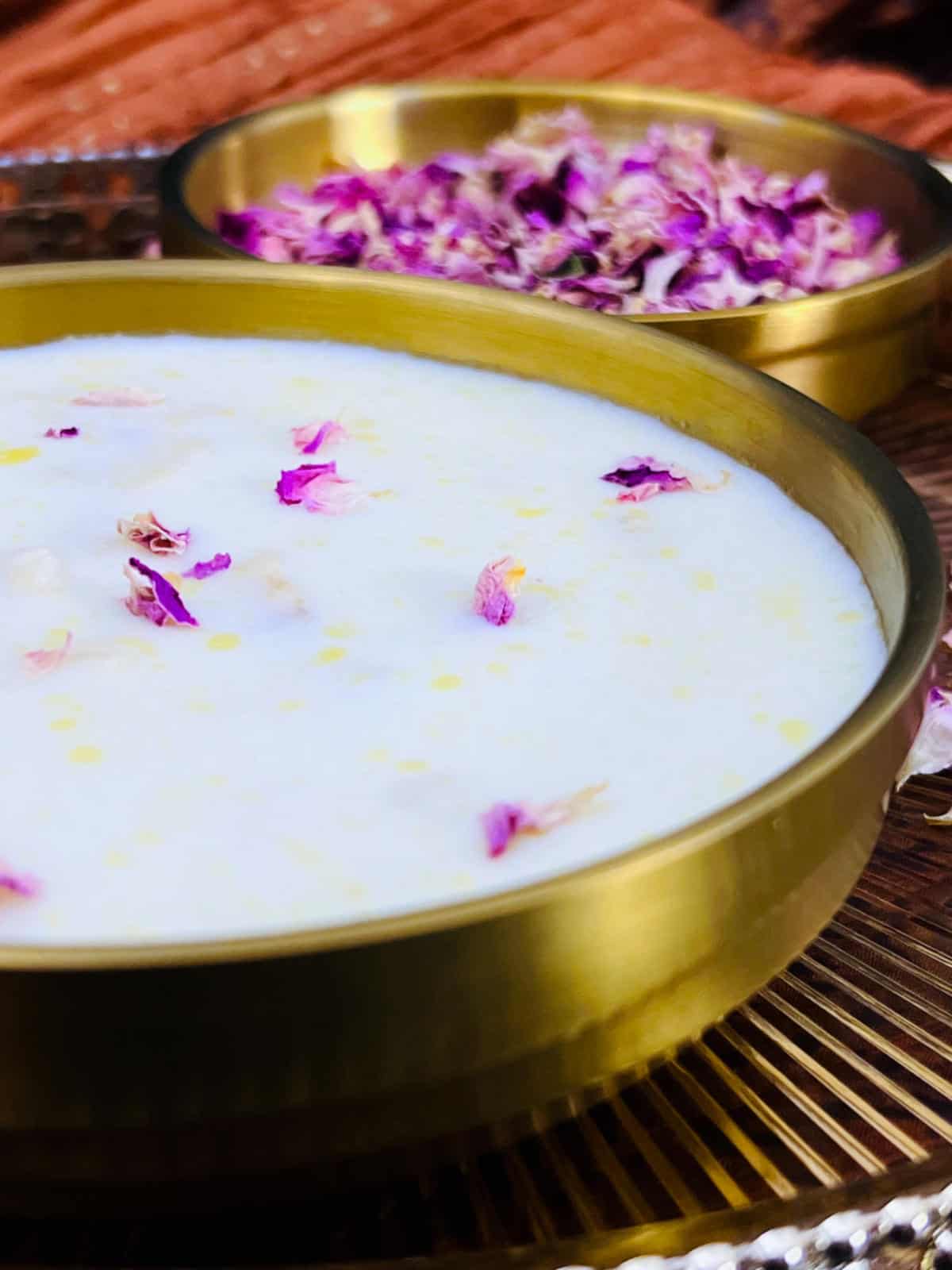
Panchamrut, also known as Panchamrit or Charanamrit, is a sacred concoction with deep-rooted significance in Hindu rituals and ceremonies. Composed of five essential ingredients - milk, yogurt, honey, ghee (clarified butter), and ripe bananas - it represents the unity of the five elements and is offered to deities during puja or worship. Panchamrit symbolizes purity, auspiciousness, and spiritual nourishment, while its consumption is believed to bring blessings and prosperity.
Get the recipe: Panchamrit.
Ganesha Chaturthi's meal plan ideas
I make some elaborate thali/meals for the Indian festival, Ganesha Chaturthi, as an offering to Lord Ganesha.
Ganesh Chaturthi Offerings #1
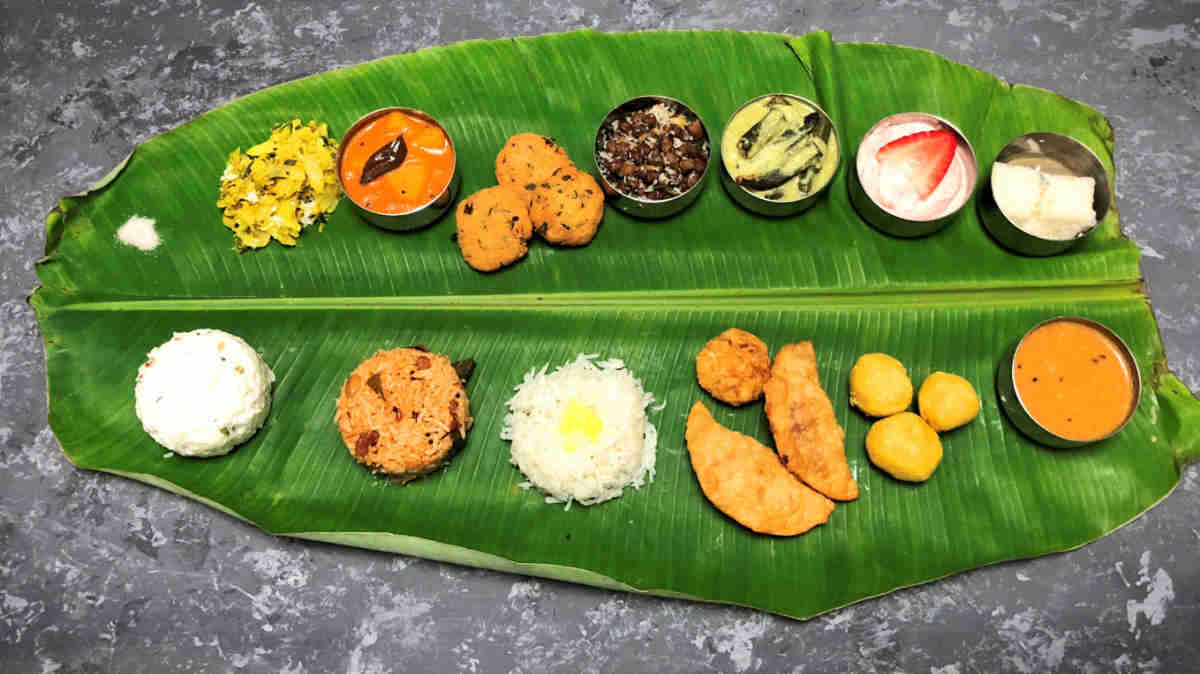
This thali consists of (clockwise from top left) salt, cabbage palya, pineapple gojju, ambode, brown chickpeas usli, majjige huli, strawberry shrikhand, kobbari mithai, hoorna saaru, besan laddu, kadabu, ghee rice, chitranna, and curd rice.
Cabbage palya: Cabbage Palya is a simple Karnataka-style cabbage stir fry or preparation that is served as a side dish. It goes well with both rice and roti.
Pineapple gojju or curry: This simple and unique dish is made by cooking pineapple chunks in a coconut masala base. It has a nice tangy and sweet taste.
Masala vada: These crispy and crunchy lentil fritters are made using Bengal gram (chana dal) and spices.
Black chana stir fry: This healthy and easy side dish is made by stir-frying boiled kala chana with spices. The dish is finished with loads of fresh coconut.
Majjige huli: Majjige huli is a traditional Karnataka dish made using yogurt. This tangy mildly spiced curry has a cilantro-coconut masala and uses vegetables like bottle gourd, ash gourd, okra, etc. Vegetarian and naturally gluten-free.
Strawberry shrikhand: Shrikhand is made using thickened yogurt that is sweetened with sugar. Here, I have flavored it using strawberry puree.
Coconut barfi: Freshly grated coconut simmered with ghee and sugar and shaped into burfi is an easy and delicious sweet treat that is ready in less than 30 minutes.
Hoorna saaru: Hoorna is a sweet chana dal stuffing used in holige. The stuffing is also used to make a sweet rasam.
Besan ladoo: Besan ladoo is a popular Indian sweet made during festivals and special occasions. It has three main ingredients – besan (gram flour), ghee, and sugar.
Kadabu: The hoorna used in the holige is used to make this sweet dish. It is made similar to gujiya.
Anna, tovve, tuppa: Steamed basmati rice with plain boiled dal and ghee.
Mavinakayi chitranna: Mavinakayi chitranna is a delectable vegan rice dish that features raw or green mango as its star ingredient.
Mosaranna (curd rice): Hearty and delicious curd rice is made by mixing cooked rice with yogurt, salt, and seasoning.
Ganesh Chaturthi Offerings #2
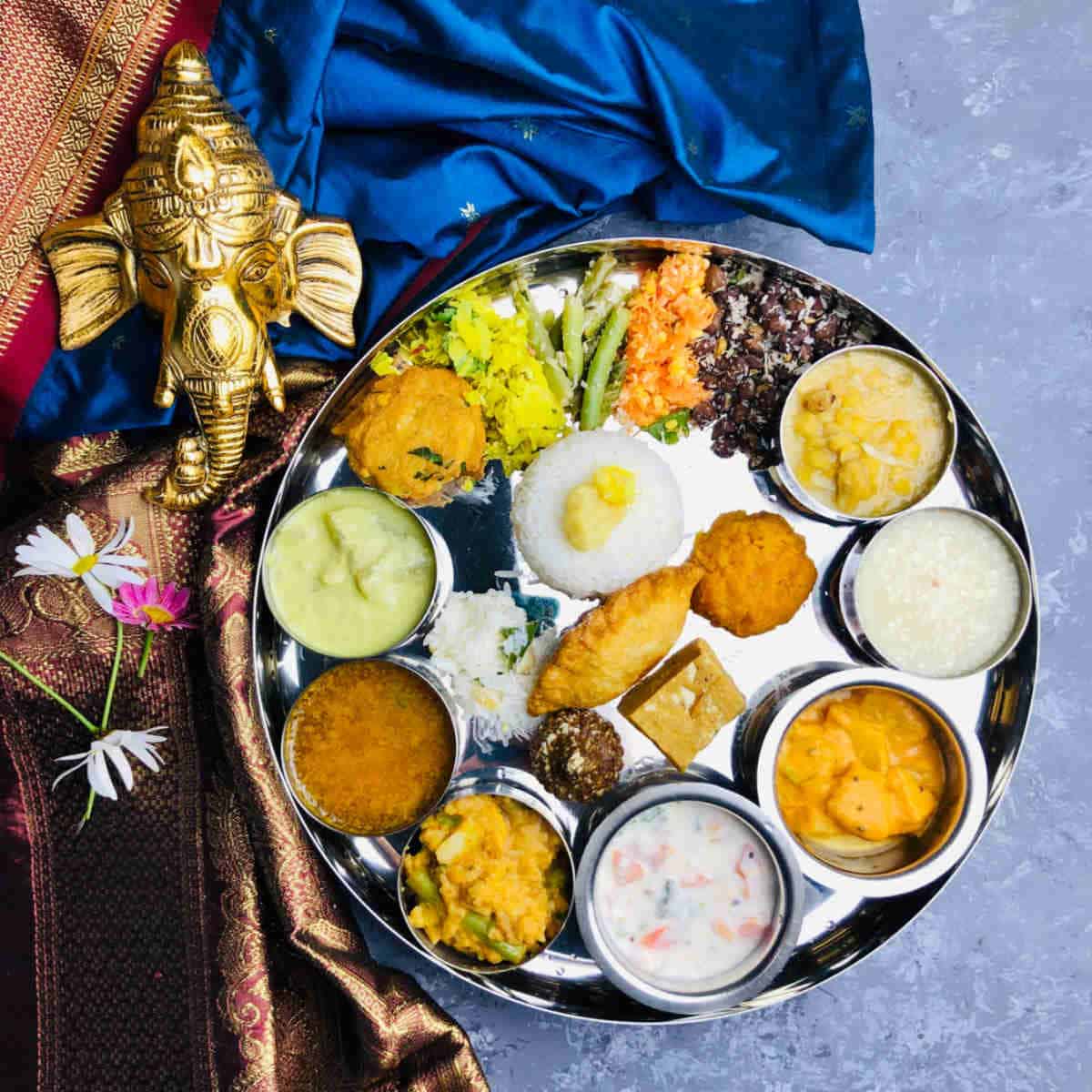
Starting from the top, clockwise: this thali consists of cabbage palya, beans palya, carrot kosambari, kadale kalu usli, hayagreeva (chana dal and coconut sweet), hesaru bele payasam (moong dal kheer), pineapple gojju, raita, bisi bele bath, tomato rasam, majjige huli, and ambode. In the center, clockwise from top: steamed rice, plain dal, ghee, carrot halwa, besan burfi, dry fruits modaka, kadabu, and mosarrana.
Cabbage palya: This simple side dish is a Karnataka-style cabbage stir fry. It goes well with both rice and roti.
Beans palya: Savor the simplicity of beans palya (beans poriyal), a quick and wholesome South Indian dish featuring sautéed green beans with minimal spices, complemented by coconut and a splash of lemon juice.
Carrot kosambari: Moong dal and carrots are the main ingredients of this popular South Indian salad.
Black chana stir fry: Boiled kala chana is stir-fried with spices in this healthy and easy side dish. Loads of fresh coconut is added as a finishing touch.
Hayagreeva: Chana dal and coconut are the main ingredients of this traditional Karnataka sweet dish.
Hesaru bele payasam (moong dal kheer) – Moong dal or split green gram and coconut milk are used to make this simple dessert.
Pineapple gojju or curry: Pineapple chunks are cooked in a coconut masala base in this simple and unique dis. It has a nice tangy and sweet taste.
Masala vada: These crispy and crunchy lentil fritters are made using Bengal gram (chana dal) and spices.
Black chana stir fry: This healthy and easy side dish is made by stir-frying boiled kala chana with spices. The dish is finished with loads of fresh coconut.
Vegetable raita: Whisked yogurt mixed with cucumber, tomato, and spices is an easy side dish that pairs with this meal.
Bisi bele bhath: In this South-Indian style khichdi, freshly ground spices cook rice, toor dal, and vegetables.
Tomato rasam: Mysore rasam is a lentil soup that's both tangy and spicy. Toor dal (pigeon pea), tomatoes, and rasam powder are used to make it.
Majjige huli: Yogurt is used to make Majjige huli, a traditional Karnataka dish. This tangy mildly spiced curry has a cilantro-coconut masala and uses vegetables like bottle gourd, ash gourd, okra, etc. Vegetarian and naturally gluten-free.
Anna, tovve, tuppa: Steamed basmati rice with plain boiled dal and ghee.
Carrot halwa: Beetroot carrot halwa is a delicious and healthy Indian dessert made with grated beetroot and carrots. This is a combination of carrot halwa and beetroot halwa which are very popular halwa varieties.
Besan burfi: Besan, ghee, and sugar are used in making this delicious besan burfi.
Dry fruits modak: This no-cook dry fruits modak is a perfect dessert or snack that is quick, easy, and healthy. Made with a blend of cashews, almonds, and dates, this recipe requires no cooking, making it a fuss-free option for those who want to satisfy their sweet cravings without compromising nutrition.
Kadabu: The hoorna used in the holige is used to make this sweet dish. It is made similar to gujiya.
Mosaranna (curd rice): Hearty and delicious curd rice is made by mixing cooked rice with yogurt, salt, and seasoning.
Ganesh Chaturthi Offerings #3
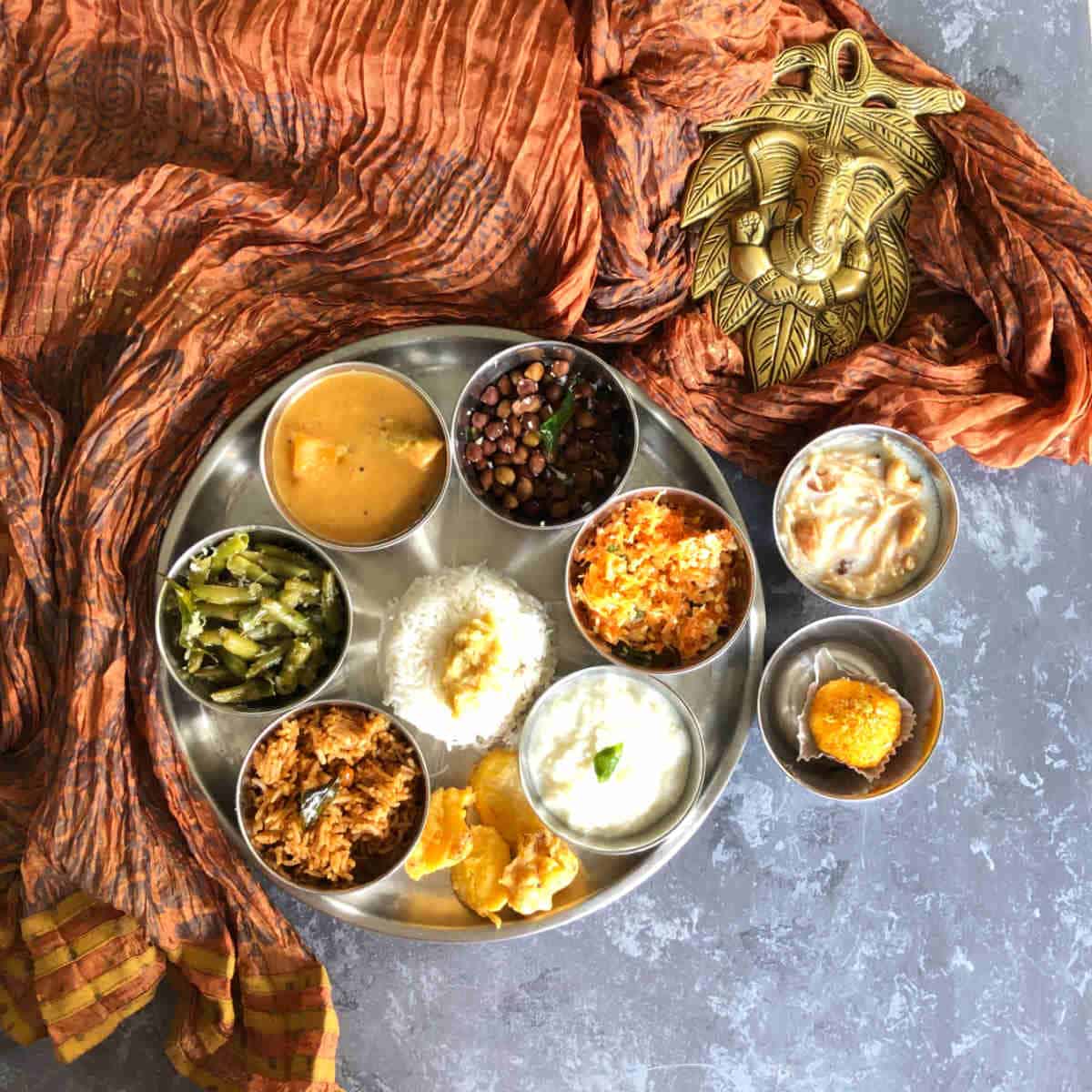
Starting from the top, clockwise: this thali consists of kadale kalu usli, kosambari, curd rice, bajji, puliyogare, beans palya, and sambar. In the center: steamed rice, tovve (plain dal), ghee. Outside the plate: shavige payasa, and motichoor laddu.
Black chana stir fry: This healthy and easy side dish is made by stir-frying boiled kala chana with spices. The dish is finished with loads of fresh coconut
Carrot kosambari: Kosambari is a popular South Indian salad that is made with moong dal (yellow lentils) and carrots as the main ingredients.
Mosaranna (curd rice): Hearty and delicious curd rice is made by mixing cooked rice with yogurt, salt, and seasoning.
Bajji: Vegetable bajji is made by batter-frying chunks of veggies in chickpea flour batter.
Puliyogare – Karnataka style tamarind rice
Beans palya: Savor the simplicity of beans palya (beans poriyal), a quick and wholesome South Indian dish featuring sautéed green beans with minimal spices, complemented by coconut and a splash of lemon juice.
Sambar – Toor dal (pigeon pea lentil) cooked with freshly roasted spices and veggies of your choice
Anna, tovve, tuppa: Steamed basmati rice with plain boiled dal and ghee.
Shavige payasam: Vermicelli kheer is a delectable Indian dessert that is a perfect treat for any occasion, infused with the richness of whole milk, the sweetness of sugar, and the aroma of cardamom.
Motichoor laddu (store-bought): Delicious laddu made with tiny gram flour (boondi) which is soaked in sugar syrup and then shaped into round balls.
Ganesha Chaturthi Sweets Recipes
- Authentic Holige Recipe (Puran Poli)
- Milk Barfi (Milk Powder Burfi) - 15 minutes
- Dry Fruits Laddu / Dry Fruit Ladoo
- Chana Dal Payasam (Instant Pot)
- Moong Dal Payasam (Instant Pot)
- Semiya Payasam / Vermicelli Kheer in Instant Pot
- Moong Dal Halwa in Instant Pot
- Instant Pot Badam Halwa (with almond meal/flour)
- Easy Instant Pot Kheer (Rice Pudding)
- Balehannu Rasayana (Indian Banana Salad)
- Kashi Halwa (Ash Gourd Halwa)
Ganesh Chaturthi Savory Recipes
- How to Cook Sona Masoori Rice - The Ultimate Guide
- Coconut Rice in Instant Pot
- Majjige Huli (South Indian Yogurt Curry) - Instant Pot
- Mysore Rasam Recipe / South Indian Tomato and Lentil Soup (Instant Pot)
- Ridge Gourd Moong Dal (Instant Pot)
- Beans Palya / Beans Poriyal (South Indian Green Beans)
- Cabbage Palya / Cabbage Poriyal (South Indian Cabbage Stir-fry)
- Chayote Squash Curry in Instant Pot
- Spicy Pan-Fried Plantains / Balekai Palya
- Cucumber Peanut Salad (Kakdi Chi Koshimbir)
- South Indian Buttermilk (Neer Mor / Majjige)
- Black Chickpea Sundal (Kadalekalu Usli)
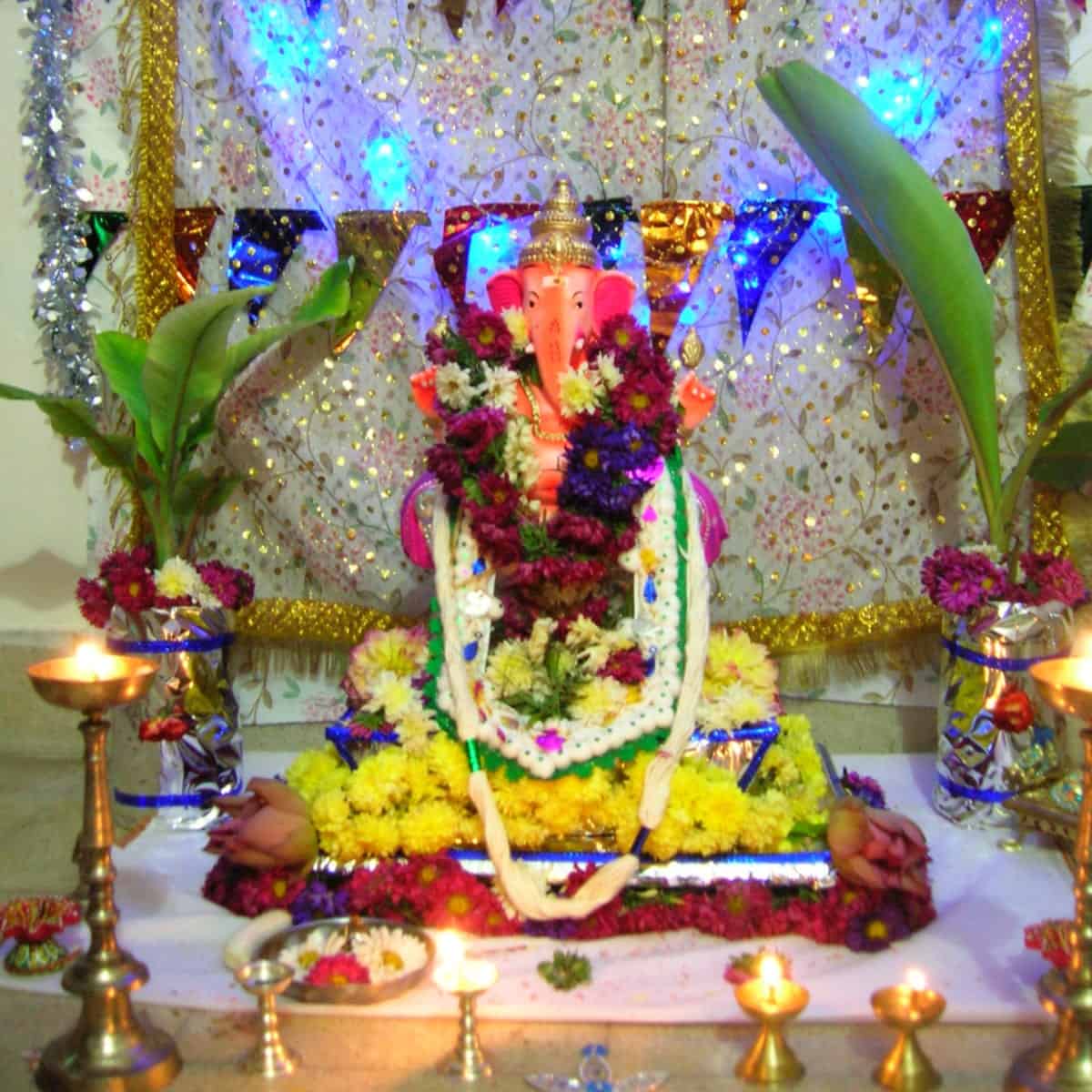
Recipe card

Ukadiche Modak (Steamed Modak)
Ingredients
For the filling:
- 2 cups coconut
- 1 cup jaggery
- 1 tablespoon ghee
- ½ teaspoon cardamom powder
For the outer cover:
- 2 cups rice flour
- 2 cups water
- ½ teaspoon salt
- 1 teaspoon ghee (use store-bought or homemade ghee)
Instructions
To make the filling:
- Place a heavy bottom pan or kadhai on medium heat and add ghee.
- Add coconut and jaggery. Mix well. The jaggery will melt making the mixture slightly moist.
- Keep stirring the mixture until it thickens and comes together. This may take around 15 minutes.
- To check if the coconut is done, take a small portion and roll it using your fingers. It should come together like a ball and hold the shape.
- Turn off the heat once the coconut mixture is done. Add cardamom powder and mix well. Let it cool completely.
To make the dough:
- Add water to a large pot or saucepan and bring it to a rolling boil.
- Once the water, add salt and ghee.
- Reduce the heat and add the rice flour. Mix well until all the water is absorbed.
- Cover and let it rest for 5 minutes.
- While the flour is still warm, transfer to a large pan and begin kneading.
- Continue kneading for 5-6 minutes until it is soft and pliable.
- The dough is ready. Keep it covered with a damp cloth to prevent it from drying out.
Shaping using mold:
- Lightly grease the modak mold with little ghee and close the mould.
- Add some dough into the mold and press it firmly to the wall. You may need 2-3 tablespoons of dough depending on the size of the mold.
- Make sure the entire mold is covered and there is a gap in the center for the filling.
- Add 1-2 tablespoons of filling in the center (adjust the amount of filling depending on the size of the mold).
- Add some dough on top of the filling. Press it gently and seal it.
- Unmould and place it in a steamer basket.
Shaping without mould:
- Take approximately 3 tablespoons of the dough and make a dent in the center.
- Using your finger and thumb, start flattening it gently, moving the dough in a circular motion. Pinch the sides using your thumb and finger to create pleats.
- Add 1-2 tablespoons of coconut filling in the center. Gently bring the pleats together and seal them carefully.
- Place it in the steamer basket for steaming.
Steaming:
- Pour 2 cups of water into the steamer and bring it to a boil.
- Place the steamer basket and steam the modak for 10 minutes.
- Turn off the heat and remove the basket from the heat. Let the modaks sit for 5 minutes before transferring them to a plate.
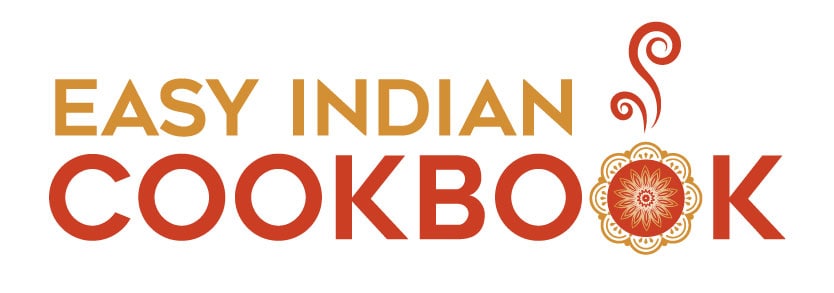
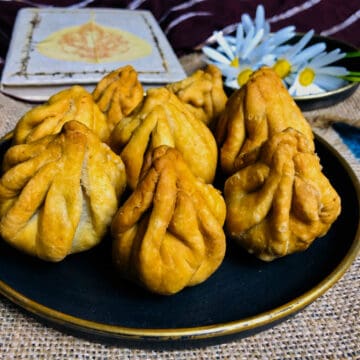
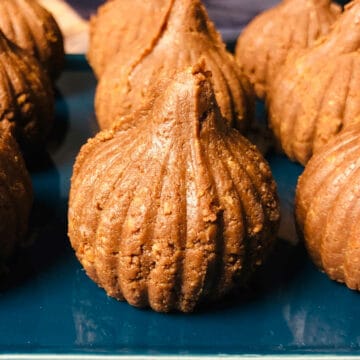
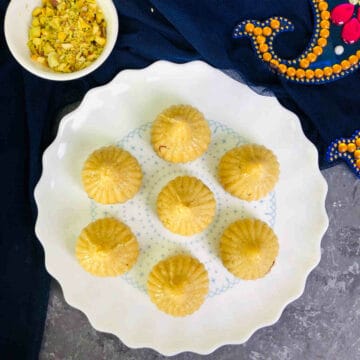

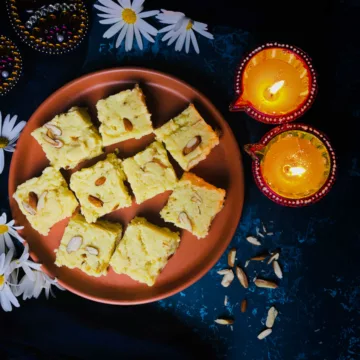
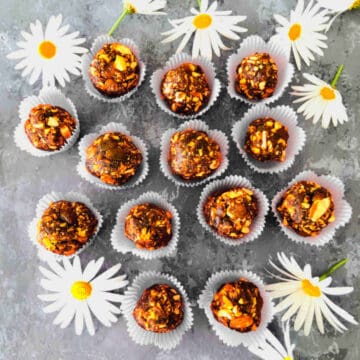
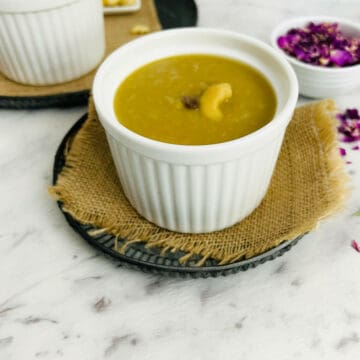
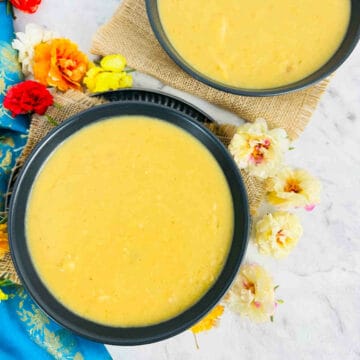
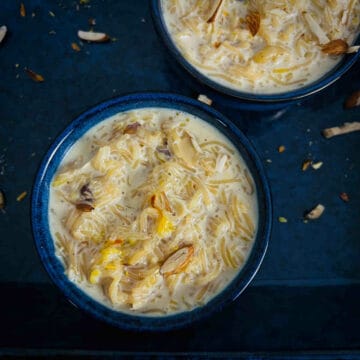
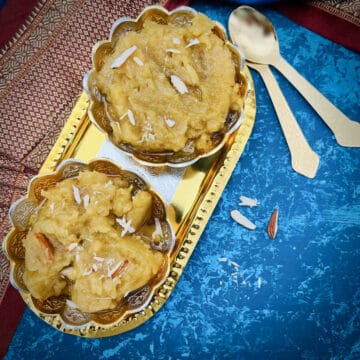
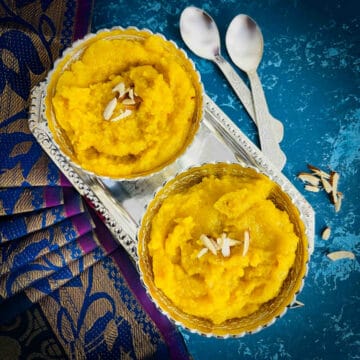
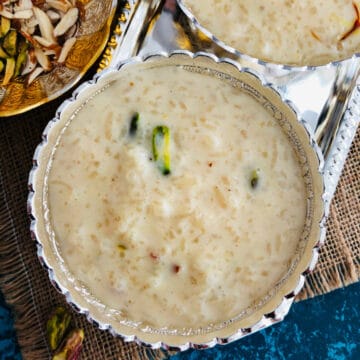

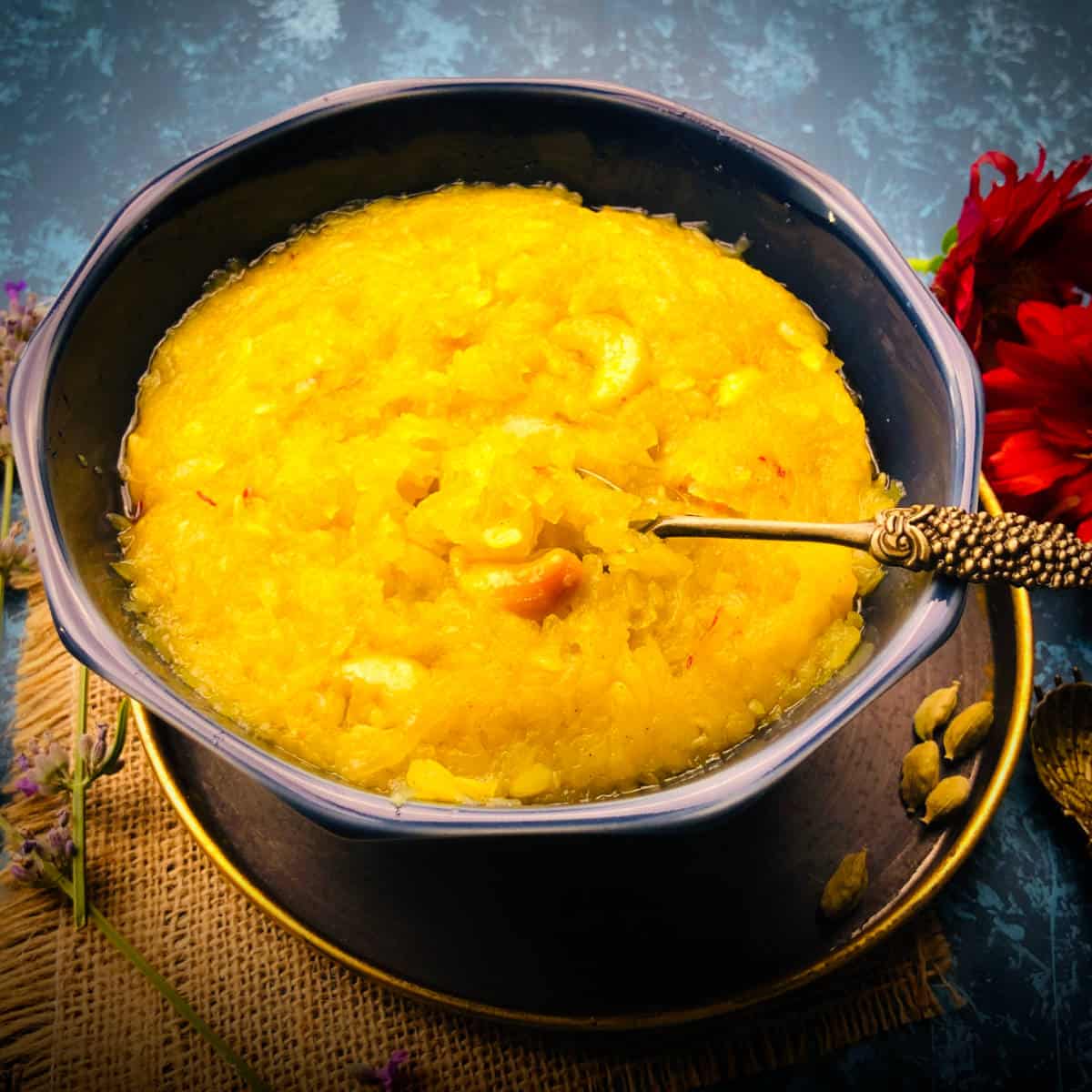

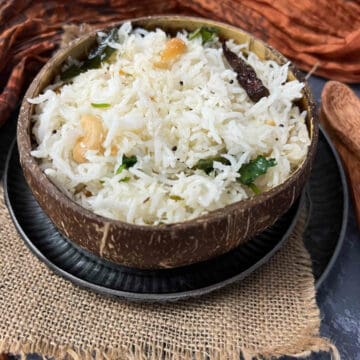
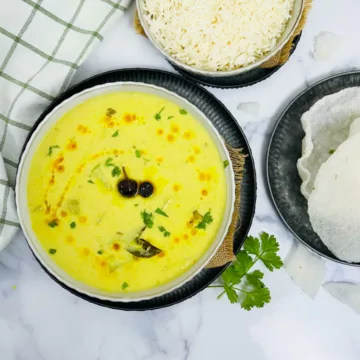
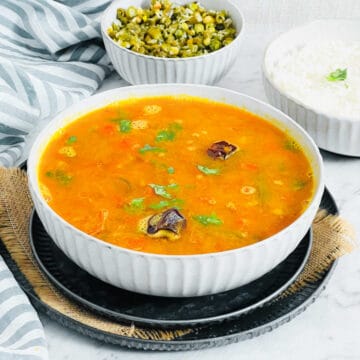
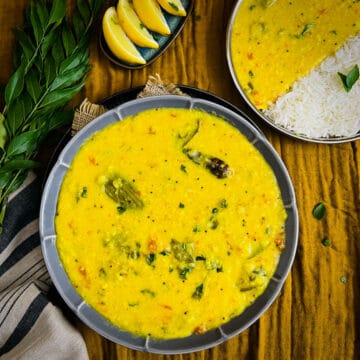

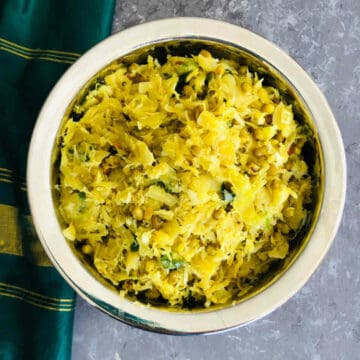
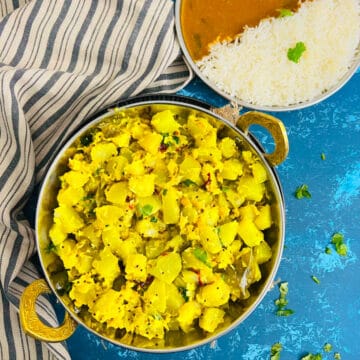

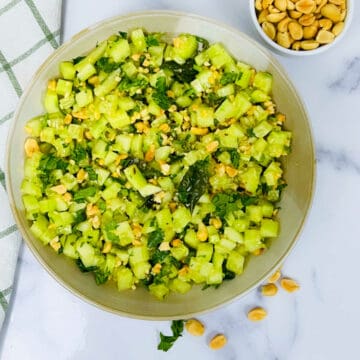
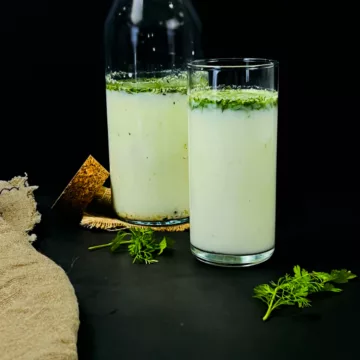
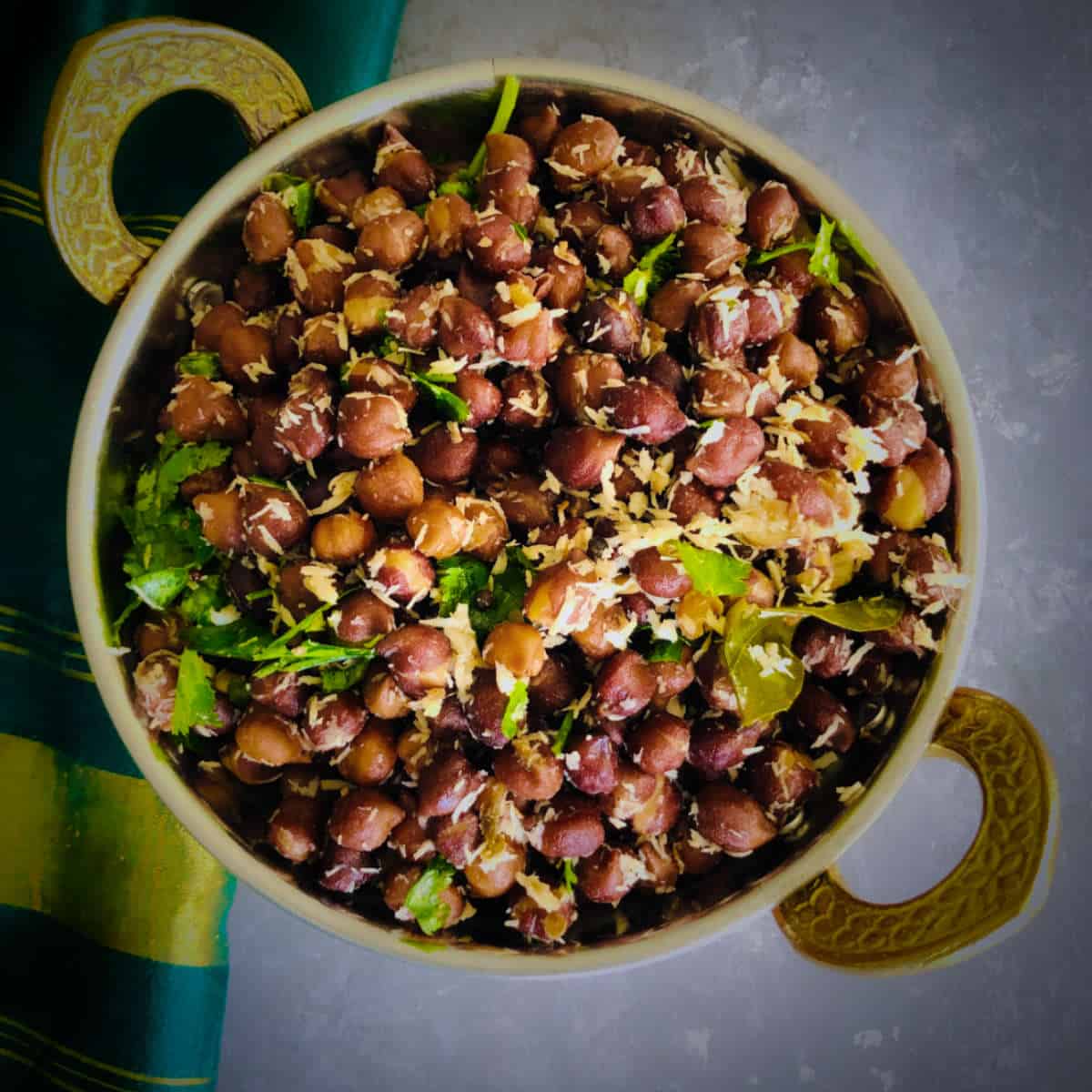
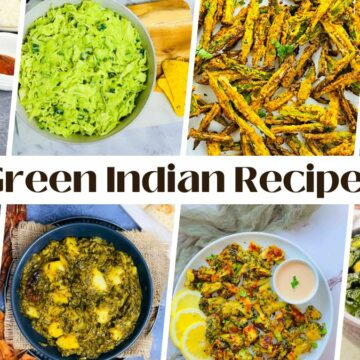
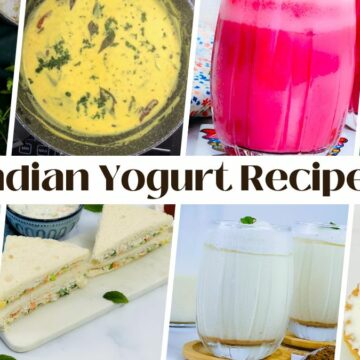
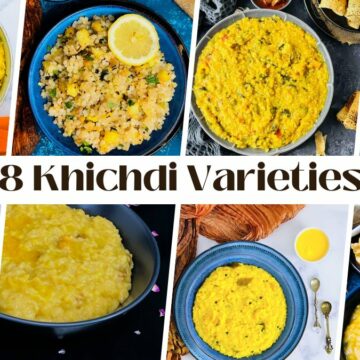
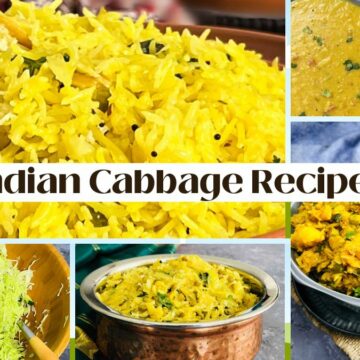
Comments
No Comments